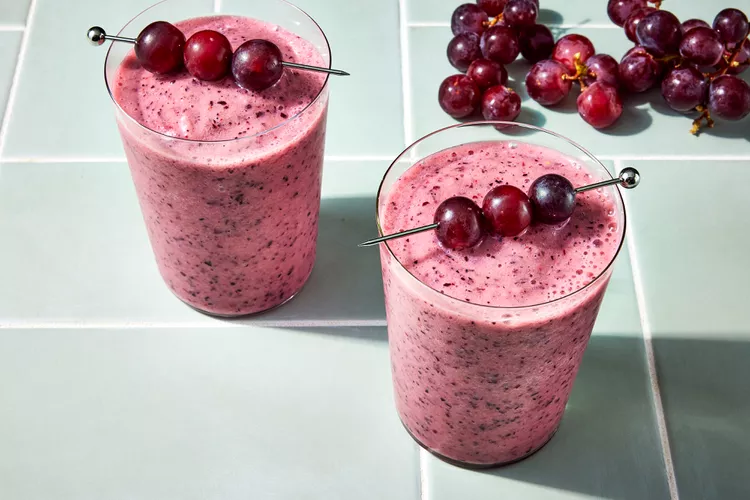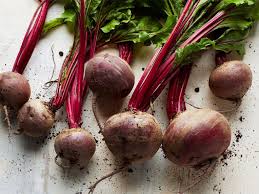Salad Toppings are generally crafted by blending fresh lettuce or mixed greens with a diverse array of toppings and a flavorful dressing. With countless options for mix-ins, salads can easily become a cornerstone of a balanced diet. While you can include almost any ingredient in a salad, some toppings offer significantly more nutritional benefits than others. Here, we present the top 20 healthy salad toppings to enhance your meals and boost your health.
Contents
- 1 what to put in a salad
- 1.1 1. Chopped Raw Vegetables
- 1.2 2. Nuts and Seeds
- 1.3 3. Dried Fruit
- 1.4 4. Whole Grains
- 1.5 5. Beans and Legumes
- 1.6 6. Fresh Fruit
- 1.7 7. Baked Tortilla or Pita Chips
- 1.8 8. Shredded Hard Cheeses
- 1.9 9. Roasted Vegetables
- 1.10 10. Hard-Boiled Eggs
- 1.11 11. Fresh Herbs
- 1.12 12. Leftover Meat
- 1.13 13. Seafood
- 1.14 14. Avocados
- 1.15 15. Soft Cheeses
- 1.16 16. Pomegranate Arils
- 1.17 17. Corn and Salsa
- 1.18 18. Tofu and Edamame
- 1.19 19. Olives
- 1.20 20. Oil-and-Vinegar Dressings
- 2 The Bottom Line
what to put in a salad
1. Chopped Raw Vegetables
A classic salad toppings begins with fresh greens such as lettuce, spinach, kale, mixed greens, or arugula. However, you can enhance your salad by adding a variety of other raw vegetables. Popular choices for raw veggie toppings include chopped carrots, onions, cucumbers, celery, mushrooms, and broccoli. These colorful vegetables are not only delicious but also packed with fiber and beneficial plant compounds that contribute to overall health. In fact, a study involving 422 young adults found that consuming raw vegetables like carrots, lettuce, spinach, and cucumber was linked to improved mental health and mood
2. Nuts and Seeds

Nuts and seeds, such as pistachios, walnuts, pumpkin seeds, almonds, peanuts, and chia seeds, make for incredibly nutritious salad toppings. For instance, just 1 ounce (28 grams) of pumpkin seeds provides 5 grams of protein and nearly 20% of the Daily Value (DV) for zinc.
Similarly, incorporating 22 almonds (equivalent to 1 ounce or 28 grams) into your salad delivers over 3 grams of fiber, along with a variety of essential vitamins and minerals. When selecting nuts or seeds for your salad, it’s best to opt for raw or dry-roasted options that contain no added salt, sugar, or preservatives. This way, you can enhance your salad while ensuring it remains a healthy choice!
3. Dried Fruit
Salads and dried fruit create a delightful and nutritious combination. Incorporating dried cranberries, apricots, mango, or raisins as salad toppings adds a touch of sweetness along with a variety of essential nutrients. For example, just 1 ounce (28 grams) of dried apricots provides 20% of the Daily Value (DV) for vitamin A and 2 grams of fiber.
To ensure you’re not consuming added sugars or preservatives, choose dried fruits that list only the fruit as the ingredient. Additionally, use these sweet additions sparingly to enhance your salad toppings without overwhelming it. If you prefer a DIY approach, you can make your own dried fruit by slicing your favorite fresh fruit into thin pieces and baking them on a lined baking sheet at 250°F (121°C) for two to three hours. This way, you can enjoy a healthy, homemade topping for your salads!
4. Whole Grains
Incorporating whole grains into your salad toppings can elevate both the texture and flavor of your dish. Popular options such as cooked brown rice, quinoa, farro, and barley are excellent choices for salad toppings. These whole grains not only enhance the taste but also provide essential fiber and protein, helping you feel full and satisfied after your meal. For instance, 1 cup (195 grams) of cooked brown rice contains 5 grams of protein and over 3 grams of fiber.
Moreover, numerous studies suggest that consuming whole grains is associated with various health benefits, including weight loss and lower cholesterol levels. You can find cooked whole grains at most grocery stores, or you can easily prepare your own. To do so, combine uncooked grains with water in a 1-to-2 ratio in a pot on the stove—using 1 cup of grains with 2 cups of water. Bring the mixture to a boil, then reduce the heat and simmer until the grains are tender. Adding these nutritious whole grains to your salad will not only boost its health profile but also make it more satisfying!
5. Beans and Legumes
Beans and legumes are outstanding additions to your salad toppings, providing a rich source of plant protein. A 1-cup (172-gram) serving of cooked black beans or kidney beans delivers over 15 grams of protein, along with essential vitamins, minerals, and fiber that support overall health.
You have the option to use canned beans for convenience or prepare them from scratch for a fresher taste. To cook dried beans, simply place them in a large pot and cover them with about an inch of water. Bring the mixture to a boil, then reduce the heat and let it simmer for one to three hours, or until the beans are tender. Incorporating beans and legumes into your salad not only boosts its nutritional value but also enhances its texture and flavor, making for a satisfying and wholesome meal.
6. Fresh Fruit
While salad toppings are often associated with an assortment of vegetables, incorporating fresh fruit can elevate your dish with delightful flavors and added health benefits. Research involving over 800 adults revealed that each additional serving of fruit consumed daily was linked to a 10% reduction in heart disease risk (3Trusted Source).
Some of the most popular fruits to enhance your salad include berries, apples, oranges, and cherries. These fruits not only add sweetness and texture but also provide essential vitamins and antioxidants. For a creative twist, consider using blended fruit or freshly squeezed fruit juice as a base for your homemade salad dressings. This approach not only enriches the flavor but also contributes to a healthier meal overall. Embrace the vibrant combination of fruits and vegetables in your salads to boost both taste and nutrition!
7. Baked Tortilla or Pita Chips
Crushed tortilla chips or pita chips can bring a satisfying crunch and a burst of flavor to your salad. Tortilla chips are especially perfect for Tex-Mex salads, complementing ingredients like beans, salsa, avocado, and shredded cheese. Conversely, pita chips are an excellent match for salads infused with Mediterranean flavors.
For a healthier choice, opt for baked corn tortilla chips or whole-grain pita chips that are low in sodium and added sugars. A typical serving of packaged whole-wheat pita chips—about 11 chips or roughly 28 grams—offers around 3 grams of fiber and 4 grams of protein (4).
If you want to create your own baked chips at home, simply slice tortillas or pitas into six triangles, brush them lightly with olive oil, and bake at 350°F (176°C) for 10–15 minutes. This homemade approach not only enhances the flavor but also allows you to control the ingredients, making your salads even more nutritious and delicious!
8. Shredded Hard Cheeses
Incorporating shredded hard cheeses like cheddar, gouda, parmesan, and manchego as toppings for your salad toppings enhances both flavor and nutrition. For instance, just one ounce (28 grams) of shredded parmesan cheese contains over 10 grams of protein and slightly more than 100 calories. Additionally, it provides 35% of the Daily Value (DV) for calcium, which is crucial for maintaining bone health, facilitating blood clotting, and ensuring proper muscle contraction.
You can easily find packaged shredded cheeses in grocery stores, along with blocks of hard cheese that you can shred yourself using a hand grater. Adding these delicious cheeses not only boosts the protein content of your salad but also contributes to a well-rounded, satisfying meal.
9. Roasted Vegetables
Roasted vegetables make a fantastic addition to raw salad greens, enhancing both flavor and texture. The roasting process can bring out unique flavors depending on the type of vegetable used, creating a rich and savory experience. Additionally, research indicates that cooking vegetables can aid in digestion and improve the absorption of certain nutrients (6, 7Trusted Source).
To prepare roasted vegetables, simply dice your favorite veggies, toss them in olive oil and your preferred seasonings, then spread them out on a lined baking sheet. Bake at 350°F (176°C) for 30–40 minutes until they are perfectly tender and caramelized.
Another great tip is to utilize any leftover roasted vegetables from previous meals as a delightful topping for your salads. This not only reduces food waste but also adds a burst of flavor and nutrition, making your salads even more satisfying!
.
10. Hard-Boiled Eggs
Eggs can be an incredibly nutritious addition to your salad toppings. One large egg packs in 6 grams of protein and over 15 essential vitamins and minerals, all for just 77 calories. This high protein content not only supports muscle health but can also help you feel fuller for longer. A study involving 30 overweight or obese women found that those who included eggs in their meals consumed significantly fewer calories over the next 36 hours compared to those who opted for bagels (8Trusted Source).
To prepare hard-boiled eggs, start by placing the eggs in a saucepan and covering them with about an inch (2.5 cm) of water. Bring the water to a boil and let the eggs cook for approximately 10 minutes. After boiling, remove the saucepan from heat and transfer the eggs to a bowl filled with cool water for five minutes before peeling. Adding hard-boiled eggs to your salads not only enhances flavor but also boosts their nutritional value, making your meals more satisfying and balanced!
11. Fresh Herbs
Herbs are the leaves, seeds, or flowers of plants that bring both flavor and aroma to your culinary creations. Adding fresh herbs to your salads or dressings can elevate your dishes significantly. Some popular choices include basil, mint, rosemary, parsley, sage, and cilantro.
Beyond enhancing taste, herbs may also offer a range of health benefits. For instance, studies suggest that certain compounds found in rosemary and sage might possess anticancer properties, while cilantro has been linked to anti-inflammatory effects. Incorporating these vibrant herbs into your meals not only makes them more delicious but can also contribute to your overall well-being.
12. Leftover Meat
Leftover meats, such as baked or grilled chicken, pork, and beef, can be a fantastic way to enhance your salads. These proteins are rich in essential vitamins and minerals, along with high-quality protein, which helps you feel full and satisfied after a meal. For instance, just 3 ounces (84 grams) of baked chicken breast packs an impressive 26 grams of protein for under 140 calories.
For convenience, pre-cooked meats can often be found at grocery stores, making them a quick addition to your salad. However, be cautious, as these may contain unhealthy additives. Alternatively, you can prepare your own proteins by cooking them in a skillet, on the grill, or in the oven at 350°F (176°C) with a drizzle of olive oil and your favorite seasonings until they reach a safe internal temperature. This way, you can enjoy a nutritious and satisfying salad while making the most of your leftovers.
13. Seafood
Incorporating seafood into your salad is an excellent way to enhance both its nutrition and flavor. Options like salmon, cod, halibut, shrimp, lobster, and even sardines are not only delicious but also packed with high-quality protein, omega-3 fatty acids, vitamins, and minerals. Research indicates that regularly consuming fish can significantly improve heart health and brain function.
To maximize the health benefits of seafood in your salads, opt for cooking methods such as baking, broiling, or grilling. Avoid deep-fried or breaded seafood, as these methods often involve unhealthy oils and excess salt. For a simple and nutritious preparation, brush your fish fillets with olive oil and your favorite seasonings, then bake them in a lined dish at 400°F (204°C) for 15–20 minutes. This not only preserves the nutrients but also elevates the flavor profile of your salad.
14. Avocados
Avocados are a remarkably versatile food and make an excellent addition to salads. They are packed with nutrients that promote heart health and support healthy aging, including monounsaturated fats, fiber, potassium, vitamin C, vitamin K, and folate. In fact, just one avocado delivers over 50% of the Daily Value (DV) for vitamin K and 41% of the DV for folate, making it a nutrient powerhouse.
You can easily enhance almost any salad by adding sliced avocado, or you might consider using guacamole as a flavorful topping. To whip up a delicious guacamole, simply mash ripe avocado with onion, garlic, and lime juice. For an extra burst of flavor, feel free to add some fresh cilantro. This creamy fruit not only enhances the taste of your salads but also elevates their nutritional value, making every bite a wholesome experience.
15. Soft Cheeses
Soft cheeses like fresh mozzarella, feta, ricotta, goat cheese, bleu cheese, and burrata are fantastic toppings for salads. They add a delightful creamy texture and rich flavor, all while providing essential nutrients such as protein, calcium, and other important micronutrients. Notably, soft cheeses like goat cheese and feta, especially when made from goat’s or sheep’s milk, are often lactose-free, making them suitable options for those who are sensitive to cow’s milk.
These delectable soft cheeses are readily available at most grocery stores and specialty markets. When shopping for mozzarella, burrata, or feta, opt for varieties that are packed in brine, as this not only helps inhibit bacterial growth but also preserves their creamy texture. Incorporating these cheeses into your salads not only enhances flavor but also boosts nutritional value, making your meals more satisfying and wholesome.
.
16. Pomegranate Arils
The vibrant red seeds of pomegranates, known as arils, are not only a visually appealing addition to salads but also a powerhouse of nutrition. These jewel-like seeds offer a delightful crunch and a burst of flavor, along with impressive health benefits. Research indicates that pomegranate arils are abundant in anthocyanins, which are compounds known for their potent antioxidant properties that can help combat oxidative stress in the body.
You can easily find packaged pomegranate arils at most grocery stores, making them a convenient choice for salad toppings. If you prefer to extract arils from a whole pomegranate, simply slice off the top, score the sides of the fruit with a knife in several places, and then gently crack it open with your hands. Incorporating these delicious arils into your salads not only enhances their appearance but also elevates their nutritional profile, making your meals both beautiful and healthful.
.
17. Corn and Salsa
Incorporating corn and salsa as salad toppings is a simple yet effective way to create a delicious and nutritious Tex-Mex-inspired salad. A 1/2-cup (128-gram) serving of corn kernels provides more than 9% of the Daily Value (DV) for fiber while being rich in essential nutrients like vitamin C and folate. Additionally, research indicates that consuming tomato-based products, such as salsa, which are high in lycopene, may contribute to reducing the risk of heart disease and certain types of cancer.
When shopping for corn and salsa, prioritize options that feature predominantly whole-food ingredients for the best health benefits. If you’re feeling adventurous, you can also whip up your own homemade salsa by combining diced tomatoes, peppers, onions, cilantro, and your choice of seasonings. This not only allows you to customize flavors but also ensures that your salad is packed with fresh and wholesome ingredients. Adding corn and salsa to your salad is a flavorful way to boost its nutritional value while enjoying a taste of the Southwest!
18. Tofu and Edamame
Tofu and edamame, which are young soybeans, are exceptional sources of plant protein that can enhance the nutritional profile of your salad. A single cup (155 grams) of cooked edamame delivers nearly 17 grams of protein, while just half a cup (126 grams) of tofu offers around 20 grams. Both of these soy-based foods are not only rich in protein but also packed with folate, vitamin K, and various other essential micronutrients.
Moreover, incorporating tofu and edamame into your diet may have health benefits, including a potential reduction in the risk of heart disease and certain types of cancer. When selecting soy products for your salad, it’s best to choose whole soybeans and tofu that contain minimal additives for maximum health benefits. Additionally, be aware that most soy products are genetically modified, so look for items labeled as organic or GMO-free to ensure you’re choosing high-quality options. Adding these nutritious ingredients not only boosts your salad’s protein content but also contributes to a well-rounded and healthy meal.
19. Olives
Olives are a delicious and nutrient-dense addition to any salad, offering both flavor and health benefits. These small fruits are rich in healthy fats, with more than 2 grams of monounsaturated fat per ounce (28 grams). Numerous studies have linked the consumption of monounsaturated fats to a lower risk of heart disease and improved cholesterol levels, making olives a heart-healthy choice.
However, it’s important to note that olives are often cured in brine, which can result in higher sodium content. If you’re monitoring your salt intake, be sure to seek out varieties labeled as low-sodium or reduced sodium. Incorporating olives into your salads not only enhances taste but also contributes to a well-balanced diet rich in essential nutrients. Whether you choose green or black olives, they are a flavorful way to boost your salad’s nutritional profile.
20. Oil-and-Vinegar Dressings
A salad truly comes alive with the addition of a delicious dressing. Research has shown that individuals who enjoyed salads dressed with full-fat options absorbed significantly more nutrients from their vegetables compared to those using reduced-fat or non-fat dressings. This highlights the importance of incorporating healthy fats into your meals for optimal nutrient absorption.
To whip up your own flavorful full-fat dressing, start with a simple mixture of oil and vinegar. Combine 2 tablespoons (30 ml) of high-quality oils like olive oil or avocado oil with 1 tablespoon (15 ml) of your favorite vinegar for a quick and satisfying dressing. To elevate your creation even further, consider adding fresh herbs and spices that cater to your palate. Experimenting with flavors not only enhances the taste of your salad but also boosts its nutritional profile, making your meal even more enjoyable!

The Bottom Line
Incorporating healthy toppings into your salad is a fantastic way to enhance both nutrition and flavor. The suggestions outlined above offer a simple yet effective way to create a satisfying mix that can help you feel fuller longer.
These nutrient-dense toppings not only enrich your salad with diverse flavors and textures, but they also contribute to a well-rounded diet and may deliver a range of health benefits. Whether you’re looking to increase your intake of protein, fiber, or essential vitamins, these toppings can elevate your meal to new heights.
For accurate nutritional information regarding the foods mentioned in this article, all data has been sourced from the USDA Foods Database, ensuring you have reliable insights into the benefits of your dietary choices. Embrace these additions to make your salads both delicious and beneficial!








